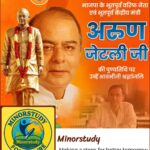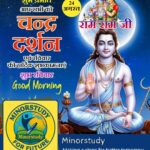Sanatan Dharma and Maharishi Ved Vyas Ji’s Divine Contribution
Introduction
Sanatan Dharma, often referred to as the eternal way of life, is not just a religion but a timeless philosophy that has guided humanity for thousands of years. Among its greatest treasures is the Mahabharata, one of the most profound epics ever written.
According to mythological belief, Maharishi Ved Vyas Ji, the compiler of the Vedas and the author of numerous sacred texts, dictated the Mahabharata, while Lord Shri Ganesha Ji penned it down. This unique collaboration between divine intellect and divine wisdom makes the Mahabharata one of the most revered scriptures in Indian culture.
Let’s explore the history, facts, timeline, significance, observances, wishes, daily life impacts, and FAQs surrounding this sacred legacy of Sanatan Dharma.
History of Sanatan Dharma and Maharishi Ved Vyas Ji
Sanatan Dharma: The word Sanatan means eternal and Dharma means righteous way of life. It signifies universal values like truth, compassion, respect, non-violence, and devotion to the Supreme.
Maharishi Ved Vyas Ji: Born in Dwapara Yuga, Ved Vyas Ji is considered one of the seven Chiranjivis (immortal beings). He is revered as the compiler of the Vedas, the author of the Mahabharata, and the creator of many Puranas.
The Mahabharata: The longest epic in the world, containing more than 100,000 shlokas, is not just a story of the Pandavas and Kauravas but a spiritual guide, political lesson, and moral compass.
Lord Shri Ganesha’s Role: According to mythology, when Ved Vyas Ji sought someone to write down the Mahabharata, Lord Ganesha agreed but put forth a condition—that Ved Vyas Ji must recite without pause. Vyas Ji, in return, made his own condition—that Ganesha must write only after fully understanding each verse. This ensured deep thought and wisdom flowed into the text.
Interesting Facts about Sanatan Dharma, Ved Vyas Ji, and Mahabharata
Universal Appeal: Sanatan Dharma is not confined to one region; its values of truth, dharma, and compassion apply universally.
Author of Authors: Maharishi Ved Vyas Ji is regarded as the Adikavi (the first poet) of India.
Mahabharata’s Grandeur: It is nearly 10 times longer than the Iliad and Odyssey combined, making it the most extensive epic in the world.
Bhagavad Gita’s Place: Within the Mahabharata lies the Bhagavad Gita, often called the essence of Sanatan Dharma.
Symbol of Divine Collaboration: The writing of Mahabharata by Lord Ganesha makes it a rare example of godly teamwork between wisdom and knowledge.
Guru-Shishya Tradition: The story highlights how divine knowledge flows through guidance, humility, and patience.
Living Philosophy: Even today, millions seek answers from the Mahabharata’s teachings on dharma, karma, and life.
Vyasa Purnima: Celebrated as Guru Purnima, this day honors Ved Vyas Ji as the greatest Guru.
Spiritual Timelessness: Sanatan Dharma’s principles remain relevant in modern times, guiding people through moral dilemmas.
Timeline
Dwapara Yuga: Birth of Maharishi Ved Vyas Ji.
Compilation of Vedas: Ved Vyas divided the Vedas into Rigveda, Yajurveda, Samaveda, and Atharvaveda.
Mahabharata Dictation: Ved Vyas Ji dictated the Mahabharata to Lord Shri Ganesha Ji.
Bhagavad Gita’s Revelation: During the Kurukshetra war, Lord Krishna gave the immortal teachings of Gita to Arjuna.
Vyasa Purnima: Celebrated annually, marking Ved Vyas Ji’s contribution to humanity.
Significance
Philosophical Depth: The Mahabharata teaches about righteousness (Dharma), duty (Karma), and truth.
Practical Life Guide: Unlike many scriptures, it covers politics, relationships, justice, war, peace, and spirituality.
Eternal Dharma: Sanatan Dharma does not bind itself to time—it adapts while keeping core values eternal.
Inspiration for Generations: Ved Vyas Ji is remembered as the guiding light of Indian philosophy, while Ganesha Ji is worshiped as the remover of obstacles.
Cultural Importance: The Mahabharata has shaped Indian thought, traditions, and storytelling for millennia.
Observance and Practices
Guru Purnima (Vyasa Purnima): Celebrated in honor of Ved Vyas Ji, where devotees worship their gurus.
Ganesh Chaturthi: Devotees remember Lord Shri Ganesha’s divine role in writing down the Mahabharata.
Recitation of Bhagavad Gita: A common practice in households, temples, and ashrams, reinforcing Sanatan values.
Mahabharata Discourse: In villages and towns, traditional discourses (Katha) of Mahabharata are still organized.
Wishing in the Spirit of Sanatan Dharma
Here are some human-friendly wishes one can share:
“May the wisdom of Ved Vyas Ji guide us toward truth and dharma in every step of life.”
“On Vyasa Purnima, let us honor the eternal Guru who gave us the gift of Mahabharata.”
“With Lord Ganesha’s blessings, may obstacles be removed from our path, and may knowledge enlighten our lives.”
Importance in Our Life and Society
Moral Compass: The teachings of Sanatan Dharma act as a guiding light in times of confusion.
Cultural Unity: Festivals like Guru Purnima and Ganesh Chaturthi bind society together.
Educational Value: Mahabharata is not just mythology but a manual for life, leadership, and ethics.
Social Stability: Sanatan Dharma emphasizes harmony, respect for all beings, and balance in life.
Spiritual Progress: The Bhagavad Gita within the Mahabharata remains a global guide for seekers of truth.
FAQs
Q1. Who is considered the author of the Mahabharata?
Maharishi Ved Vyas Ji is regarded as the author who dictated it, while Lord Shri Ganesha Ji wrote it down.
Q2. What is Vyasa Purnima?
Vyasa Purnima, also known as Guru Purnima, celebrates Ved Vyas Ji’s birth and honors all gurus.
Q3. Why is the Mahabharata significant?
It is the world’s largest epic, containing the Bhagavad Gita, and serves as a philosophical and moral guide.
Q4. How is Sanatan Dharma different from religion?
Sanatan Dharma is not just a religion but an eternal way of life, focusing on universal truths.
Q5. What role did Lord Ganesha play in the Mahabharata?
Lord Ganesha acted as the divine scribe, writing the epic as Ved Vyas Ji recited it.
Daily Life Impacts
Spiritual Guidance: The Mahabharata and Gita guide people in personal and professional life.
Problem-Solving: Stories and teachings offer solutions to conflicts, stress, and ethical dilemmas.
Festive Joy: Observances like Guru Purnima and Ganesh Chaturthi strengthen community bonds.
Moral Growth: Sanatan Dharma instills honesty, patience, and compassion in individuals.
Cultural Pride: Indian society continues to draw strength and pride from its Sanatan roots.
Conclusion
Sanatan Dharma is eternal because its truths are eternal. Maharishi Ved Vyas Ji’s gift of the Mahabharata and Lord Shri Ganesha Ji’s role as its divine scribe symbolize the unbroken chain of wisdom and devotion.
The lessons from this sacred epic are not bound by time—they remain relevant even today, teaching us that life is a balance of dharma, karma, and truth. By remembering Ved Vyas Ji and Lord Ganesha, we honor not just mythology but the very essence of humanity’s spiritual journey.








